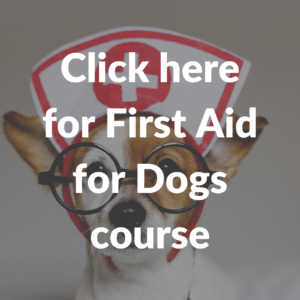Water safety advice for your pets: Being around cool water in the warmth of summer is one of life’s pleasures. Whether its splashing in a pool, playing on the beach, wild swimming in a river or lake, or a boating adventure to sea, it always pays to keep ourselves and our pets safe around water.
Here are some key tips to remember to keep your pet safe when on or around water.
Prevention
Prevention is key to avoiding this situation happening in the first place. Always be extra cautious when you are near water with your dog. If you feel they might make a dash for it, make sure you put them on the lead until you are at a safe distance.
Not all dogs are natural swimmers
It is all too easy to simply assume your dog can swim. However, many dogs don’t feel at ease in the water. If a dog has a large body but short legs, for example, an American Bulldog, these dogs don’t swim for fun, only to survive and may struggle.
Furthermore, even those that are able to swim can still get into trouble.
Even if your dog is proficient at doggy paddle and seems to enjoy the water always be aware that a dog’s vision decreases as he gets old. It also decreases dramatically at night.
Develop water confidence
It is sensible to teach your pet water confidence which you can develop and build by playing games such as tossing a stick or a ball in the water, progressively further from shore or shallow steps.
Steep and slippery
Some dogs, due to their age or conditions such as arthritis, find getting out of the water difficult, especially when they are tired after a swim. Dogs may discover it is tricky to get themselves out of the water because the sides of the pond, river or lake are too steep or very slippery. Or they could simply get stuck in the sand, mud or underwater weeds.
Pool sense
If possible, train your dog to know how to exit the pool should they fall in. Teaching them to find and use the steps or ramp to get out of the pool takes a bit of training, but it can be done.
Pool safety
If you have a pool, you can invest in safety features to make it pet- and child-safe. Fencing the area off is one way to make sure water is not accessible. Or install a pool alarm which sounds when someone or something falls into the water. However, there is no product that beats supervision and constant vigilance.
At the beach
It is sensible to be aware of the currents, height of the waves and also bacterial levels. Roundworm eggs, among other parasites can be plentiful on dog beaches.
Strong currents and choppy water
If your pet goes into the sea where there is a strong current or choppy water, they may tire more quickly. Dogs don’t understand about preserving their energy by treading water, so if they are in the water they keep swimming, which means they will tire more quickly than a person in the same situation.
At the beach, never allow your dog to swim out far enough to be taken by the current. A good rule of thumb is – if it’s not safe for you to swim, it’s not safe for your dog either.
Cold water
Don’t let your dog swim in water that’s too cold for them. In fact, just like humans, dogs can suffer from hypothermia when in cold water. However, dogs won’t understand the water is what is making them cold. Neither will they be able to tell you. A good rule of thumb is – if you need to get out of the water because you are getting chilly, your dog is also at risk of getting cold too.
Cold water shock
Be aware that a sudden temperature change can affect dogs just as it can humans and the difference between a scorching hot summer day and cold water can lead to cold water shock in pets, too.
Boats and open water
Even if your dog is a strong swimmer, you’ll still need to make sure they always wear a life jacket if you’re taking them out on a boat.
Not only will it help them to float if they fall in, it will also give people trying to save them something to grab onto.
If your dog falls overboard during the day, try and keep pointing at him in the water so you don’t lose his position in the water.
If you are on a boat overnight, ensure your dog stays securely inside the boat. This is because if your dog falls overboard at night, you are unlikely to find him if you are moving, and he will be difficult to locate in the dark.
Remember that dogs are much heavier in water than on land and may struggle – so ensure you have the strength to get them out of the water, should they need help.
Fresh water
Salt water isn’t good for dogs to drink – and ponds can be contaminated too, so always ensure you travel with fresh water, to avoid them drinking from somewhere they shouldn’t. Don’t let your dog swim in any ponds with dangerous blue-green algae as this is incredibly toxic to dogs and humans.
Ear infections
Always clean your dog’s ears after a swim as moisture left in a dog’s ear can offer beneficial conditions for an ear infection. Therefore clean and dry your dog’s ears after each play in the water.
Secondary drowning
Dogs can suffer from secondary drowning, as can humans, so even if your dog appears to make a full recovery but they were unconscious in the water, then they do need to be seen by a vet.
How to help a drowning pet
Whatever the circumstances, it’s good to know how to help your dog, should they need it. Remember never risk your life for a drowning pet. Do not go into dangerous water (cold/icy water, fast running water, water with a strong current, any water where you don’t know the depth etc) to rescue your dog.
Panic in the water
In fact, medium to big dogs that panic in the water can easily drown a human, especially those who are small or poor swimmers. Furthermore, jumping into deep water to help them by swimming alongside your dog, simply puts you at risk. The best response is to remain calm and guide your dog to a location where you can get them out of the water safely.
If you find your pet unconscious in water:
Remove them from the water if safe to do so. Check the mucous membranes for a grey or bluish discolouration which would mean they are cyanosed and your pet has been deprived of oxygen.
Check for breathing
If they are not breathing and you are able to do this; hold your pet upside down and gently shake them as this can encourage them to breathe on their own.

Alternatively put them onto their right hand side with their head lower than their body.
Locate the last ribs and push into the dent beside these in an upward motion towards their head to try and force out any weed or water and encourage them to breathe.
Repeat this 4 or 5 times for up to a minute
If they do not begin to come round or start breathing and there is no pulse, start rescue breaths and then if appropriate, CPR. Click here to find out more about CPR for dogs.

Following our handy water safety checklist should ensure you can continue to enjoy many happy times with your dog around water this summer.
Read our summer water safety checklist for humans
About us
As well as our extremely comprehensive online First Aid for Dogs course we also have a practical First Aid for Dogs course.
Award-winning first aid training tailored to your needs. Please visit our site and learn more about our practical and online courses. It is vital to keep your skills current and refreshed.
Furthermore, we strongly advise that you attend a fully regulated Practical or Online First Aid course to understand what to do in a medical emergency. Please visit https://firstaidforlife.org.uk or call 0208 675 4036 for more information about our courses.
First Aid for Life is a multi-award-winning, fully regulated first aid training provider. Our trainers are highly experienced medical, health and emergency services professionals. They will tailor the training to your needs. Courses for groups or individuals at our venue or yours.
First Aid for Pets provides this information for guidance only. It is not in any way a substitute for veterinary advice. The author does not accept any liability or responsibility for any inaccuracies or for any mistreatment or misdiagnosis of any person or animal, however caused.
- What is a seizure? - 13th March 2025
- Febrile Convulsions and Seizures in Children - 13th March 2025
- Why women are less likely to receive CPR or survive cardiac arrest - 6th March 2025







